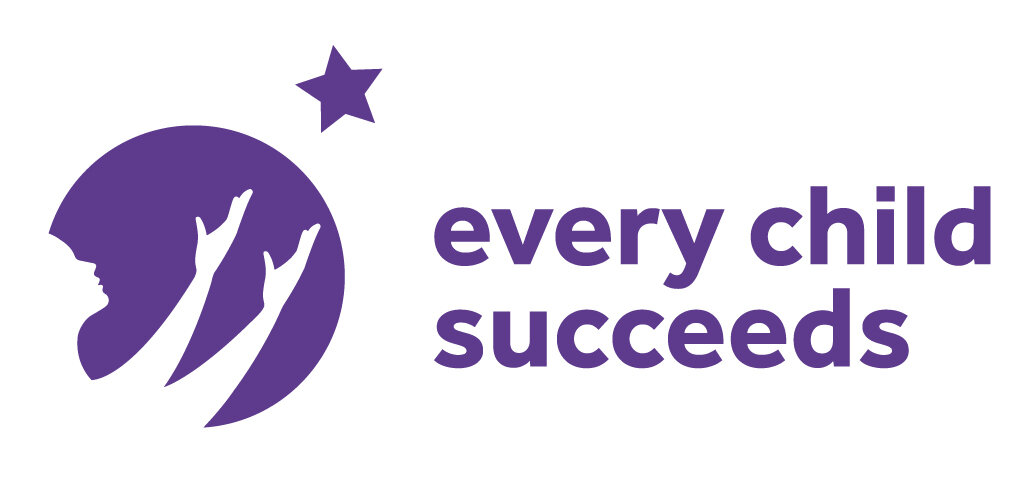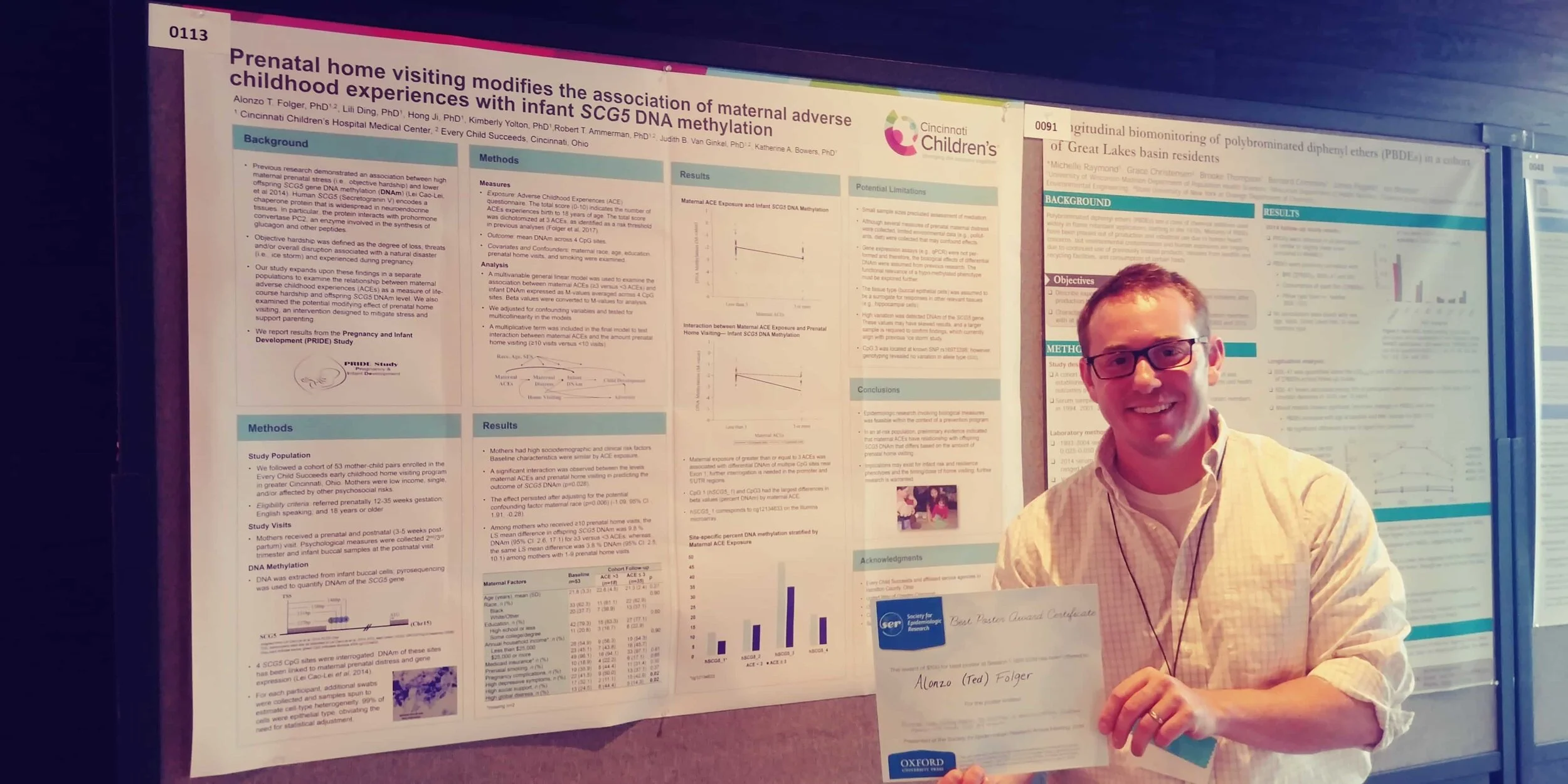Alonzo (Ted) Folger, Every Child Succeeds and Children’s Hospital Medical Center Win Best Poster Presentation Award
Alonzo (Ted) Folger, PhD, Every Child Succeeds and Children’s Hospital Medical Center were awarded the best poster presentation at the 2018 Society for Epidemiologic Research (SER) conference in Baltimore, MD. The session competition was among 230 presentations. The study findings suggest that parental early life adversity may have an impact on offspring epigenetic processes (DNA methylation) at certain genes. Further, a higher amount of prenatal home visiting may modify this effect. Evidence is still preliminary, but warrants continued research as these effects may have relevance to developmental health.
PRENATAL HOME VISITING MODIFIES THE ASSOCIATION OF MATERNAL ADVERSE CHILDHOOD EXPERIENCES WITH INF ANT SCGS DNA METHYLATION
Alonzo T Folger, Lili Ding, Hong Ji, Kimberly Yolton, Robert T. Ammerman, Judith B. Van Ginkel, Katherine A. Bowers, (Cincinnati Children’s Hospital Medical Center)
Previous research has demonstrated a large negative correlation between maternal prenatal objective stress (e.g., physical hardship, traumatic experiences) and DNA methylation (DNAm) of the SCG5 (Secretogranin V) gene promotor. Offspring epigenetic responses to maternal adversity and trauma may undermine healthy child development. Early childhood home visiting (HV) programs aim to engage mothers during pregnancy and mitigate the potentially deleterious intergenerational effects of maternal adversity. However, it is unknown whether HV programs can impact early epigenetic responses to adversity, potentially promoting more resilient phenotypes. We followed a cohort of 53 mother-child pairs enrolled in a HV program in Cincinnati, Ohio and examined (1) the association between maternal adverse childhood experiences (ACEs)—a measure of adversity and trauma—and neonatal DNAm at the SCG5 gene and (2) modification of this effect by the dose of prenatal HV. Methods: Mothers completed the ACE measure prenatally, and infant buccal samples were collected for pyrosequencing at 1-month post-partum. A multivariable general linear model was used to examine the association between maternal ACEs (≥3 versus <3 ACEs) and infant DNAm expressed as M-values averaged across 4 CpG sites. We tested for an interaction between maternal ACEs and prenatal HV (≥ the median of 10 versus 1-9 home visits). Results: A significant interaction was observed between the levels maternal ACEs and prenatal HV in predicting the outcome of SCG5 DNAm (p=0.028). Among mothers who received ≥10 prenatal home visits, the LS mean difference in offspring SCG5 DNAm was 9.8 (95% CI: 2.6, 17.1) for mothers with ≥3 versus <3 ACEs; whereas, the same LS mean difference was 3.8 (95% CI: 2.5, 10.1) among mothers with 1-9 prenatal home visits. Conclusion. In a home visited population, preliminary evidence indicates that maternal ACEs have a relationship with offspring SCG5 DNAm that differs based on dose of prenatal HV.

